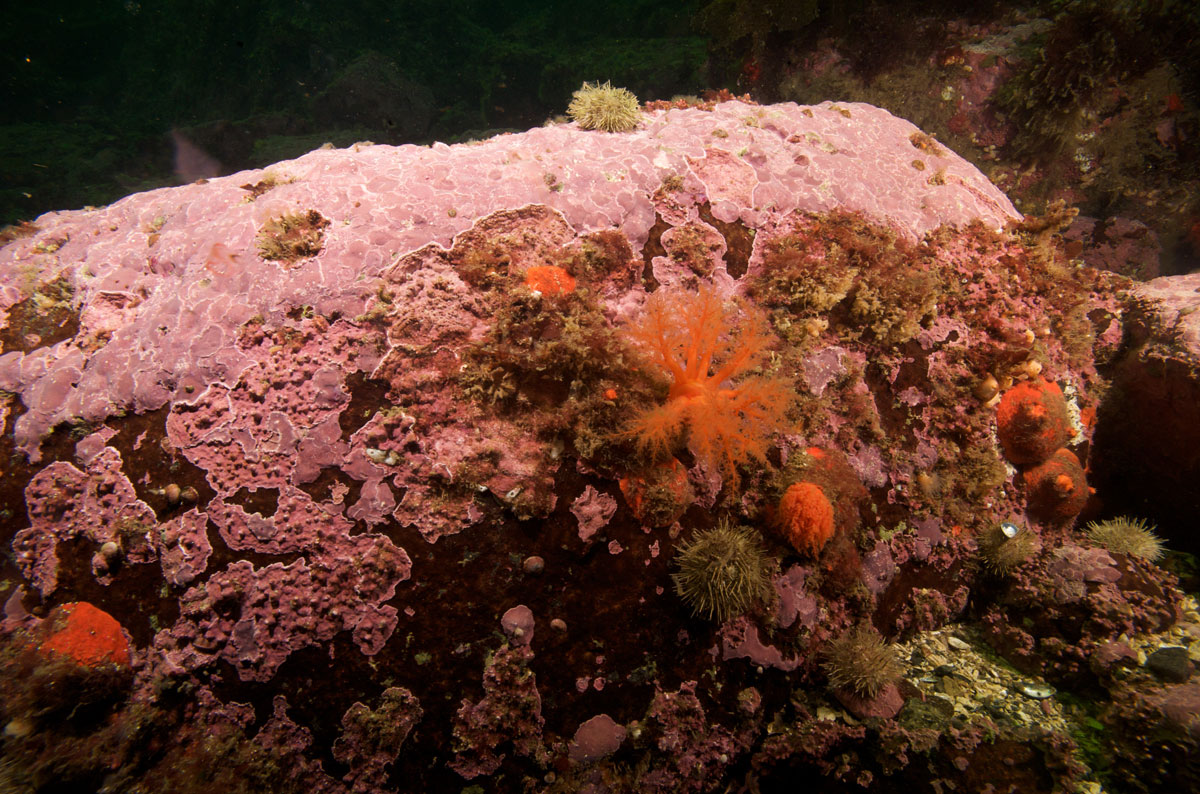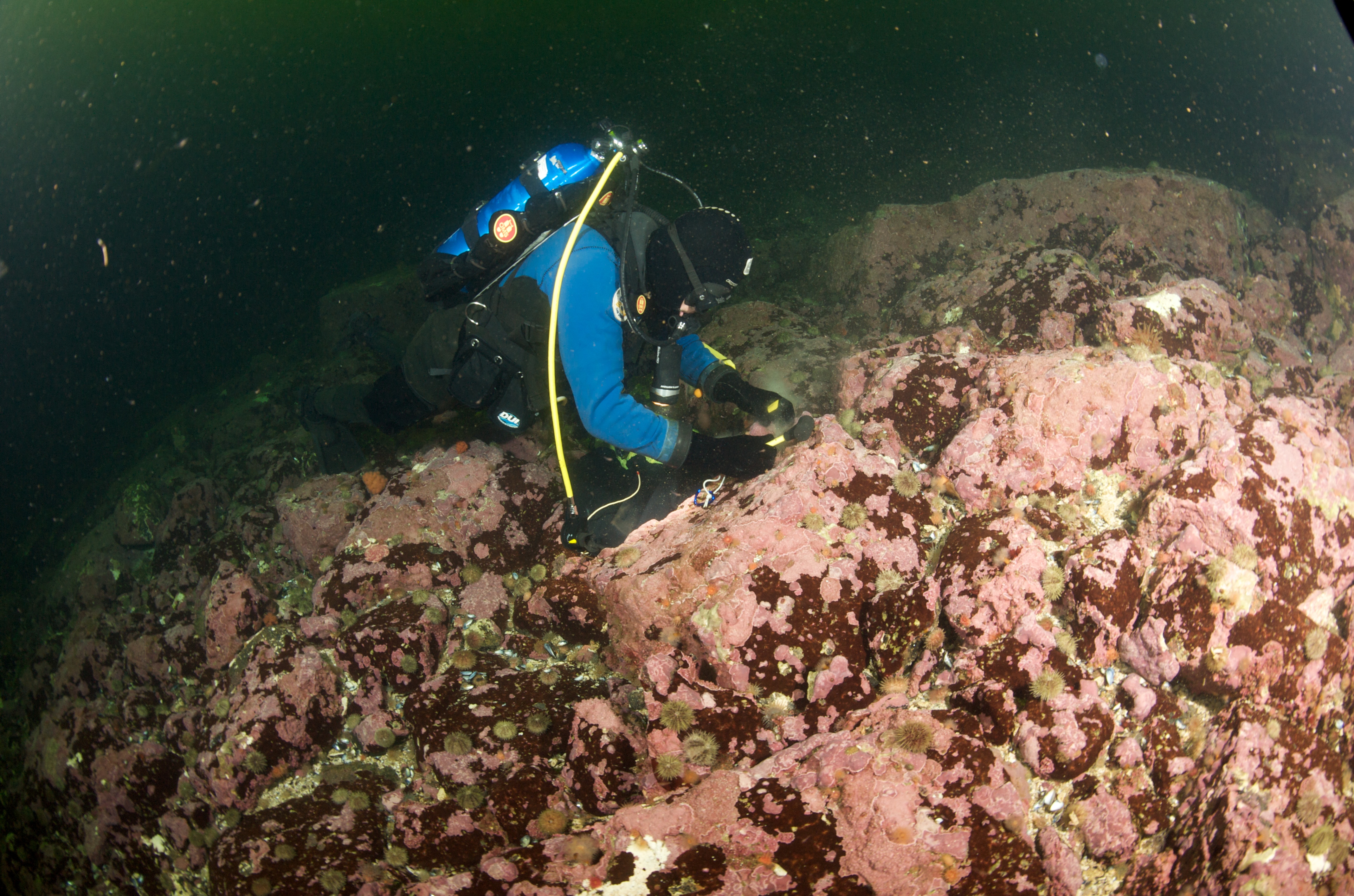Ancient Arctic Algae Record Climate Change in 'Tree Rings'

Bright pink algae that light up the Arctic seafloor like Las Vegas neon are also guides to hundreds of years of climate history, a new study shows.
From the medieval chill called the Little Ice Age to the onset of global warming in the 1800s, the coralline algae show how Arctic sea ice has responded to climate swings for the past 650 years. The findings were published today (Nov. 18) in the journal Proceedings of the National Academy of Sciences.
For the first time, researchers now have ancient sea ice information on a yearly scale, said lead study author Jochen Halfar, a paleoclimatologist at the University of Toronto in Mississauga, Canada. "This is important for understanding the rapid, short-term changes that are currently ongoing with respect to sea ice decline," Halfar said in an email interview.
Undersea 'tree rings'
The species are called coralline algae because they deposit coral-like crusts of the mineral calcite on underwater rocks, coating the rocks with colorful pink splotches. (However, algae are plants and coral are animals.) Because the algae go dormant in the winter, when sea ice blocks incoming sunlight, the calcite layers develop visible bands that are similar to tree rings, Halfar said.
During the Little Ice Age, when volcanoes and sun cycle variations caused a global cooling from the 1300s to the 1800s, the coral's underwater "tree rings" narrowed, suggesting extensive sea ice cover and short summers. Starting in 1850 — the onset of the Industrial Revolution — the algae's growth rings doubled in thickness, in sync with the decline in the extent of Arctic sea ice. "The steepness of the decline is unprecedented in the entire record," Halfar said.
The algae records also reveal frequent year-to-year variations in the amount of sea ice, as satellites have seen in the past decade, when the Arctic sea ice has seesawed between relative highs and extreme lows.
Get the world’s most fascinating discoveries delivered straight to your inbox.
Collecting more algae crusts could help fill a gap between climate records from sediment and ice cores, which may only provide a record for every 100 years, and satellite tracking, which goes back for only a few decades, Halfar said.
"Models right now differ tremendously in predicting when an ice-free summer Arctic will occur," Halfar said. "A big problem in these models is the lack of long-term data from the past that can be used as input. With our coralline algal sea ice record, we might be able to better constrain model prediction."
Old and cold
To collect the crystalline crusts, divers chiseled off calcite shards from underwater rocks in the Labrador Sea offshore of Kingitok Island and in the Arctic Ocean near Nunavut, Canada.
The oldest algae crusts contained 646 years of layers, confirmed by carbon dating, the researchers said. The algae, called Clathromorphum compactum, owes its long lifespan to its thick calcite crust and a different protective layer, called eitihallium, that keeps grazing animals from chomping too much of the algal surface, Halfar said.
While 646 years won't put the algae near the record for the world's oldest plant (which is held by trees such as 5,000-year-old bristlecone pines), the discovery does add to the list of long-lived, cold-loving species. Sponges in Antarctica may live for up to 10,000 years, and mollusks collected offshore of Iceland can live for more than 500 years.
The algae's lifespan is theoretically unlimited, Halfar said. "Much longer records are possible, and in fact, during an expedition this past summer, our group sampled some specimens off Labrador that, based on their thickness are well over 1,000 years old (in-depth analysis and dating pending)," Halfar told LiveScience.
Email Becky Oskin or follow her @beckyoskin. Follow us @livescience, Facebook & Google+. Original article on Live Science.




